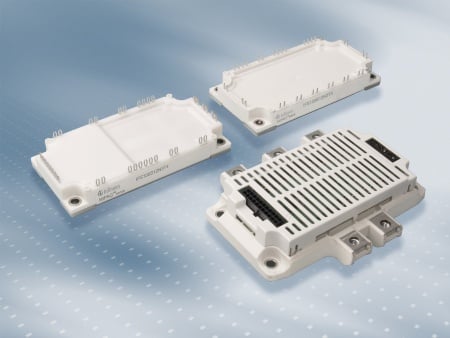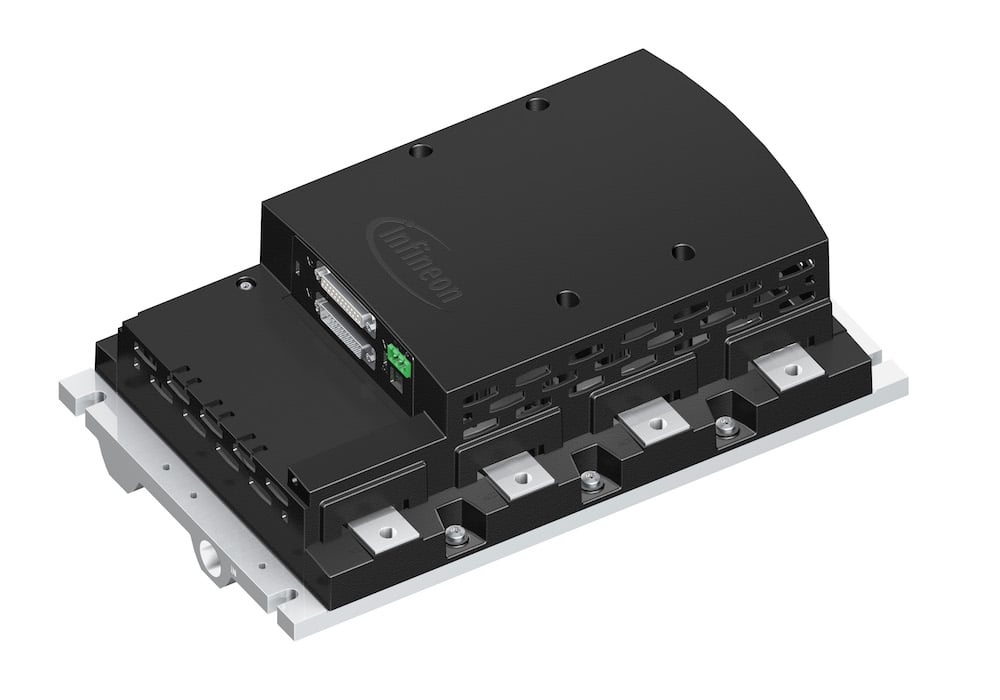Optimizing for the Smart Grid: A Look at Infineon’s MIPAQ Intelligent Power Module
This News Brief looks at Infineon's Intelligent Power Module (IPM), the MIPAQ Pro, which has been updated for use in smart grid applications.
This News Brief looks at Infineon's Intelligent Power Module (IPM), the MIPAQ Pro, which has been updated for use in smart grid applications.
One of Infineon's IPMs (intelligent power modules), the MIPAQ Pro, has recently been optimized for use in monitoring smart grids and energy storage.
To increase the module's running up-time, Infineon redesigned their MIPAQ module by allowing changes to be quickly made via digital bus communication as well as an available option slot to sense signal adaptations. Infineon also considered modular systems and scalability by designing their IPMs to be connected in parallel, allowing for up to four modules to cover up to 7MW of power.
The MIPAQ Family
The MIPAQ (Modules Integrating Power, Application, and Quality) is a well-tested IPM that integrates IGBTs, gate drivers, sensors, heat sinks, sensors, as well as digital control electronics.
The half-bridge design allows for nominal current ratings up to 2400A and blocking voltages of 1200V and 1700V. Infineon also has an option for air-cooled and liquid-cooled heat sinks in the case of extreme weather. The module also offers smart protection that allows for operating parameters such as output current, DC voltage, switching frequency, PCB temperature, and operating temperatures at junctions of the IGBTs and diodes to be monitored closely. This optimization of monitoring allows for safe operation within the user's specified limits.
The MIPAQ family consists of the Base, Sense, and Serve. The Base incorporates integrated current sensing shunts, the Sense has fully digital current measurement capabilities, and the Serve has adapted driver electronics and temperature measurement functionality. More information on the MIPAQ Family can be found here.

The MIPAQ Family
Optimizing for the Smart Grid
The smart grid is an extremely important area of power engineering as it attempts to provide an improved electricity supply from the power plant to the outlets in a home. If that connection from plant to home gets interrupted, then many homes could be without power for an unknown amount of time (depending on the severity of the outage).
For most homes today, electricity is supplied to by starting at extremely high voltages at the power generation stations, stepping down to an efficient level such as 500,000 volts (for optional transmission over long distances), and stepping down further as it nears a town and again once it reaches a home, which it is then at a 120/240 volt level applicable for utilities and devices.
This method of transmitting and supplying electricity on through the power grid is becoming outdated through the use of smart grid technologies such as Infineon's MIPAQ Pro.

The MIPAQ Pro. Image via Infineon
The aim is to monitor, analyze, and control a system while reducing energy consumption. Smart grid technology can also help situations like managing outages (a timely prospect, given the outage that Puerto Rico is currently facing). While an outage could have happened to any power grid, the incorporation of smart grid technology such as digital electric meters that incorporate network connectivity would allow repair crews know exactly where the outage occurred as well as what is needed for repair (e.g., a small transformer or a SCADA center).
MIPAQ Pro's intelligent wiring allows users to replace power units, substations, and other utilities with 50% higher rated components (e.g., 150°C semiconductor junction) to be incorporated into the power grid. Infineon also included various warning levels that can be applied to specific instances thus helping power testing engineers to formulate changes before a potential fault-triggered outage occurs.
Do you have experience with smart grids? Do you have first-hand knowledge of ongoing updates to existing power grids? Share your experiences in the comments below.








This is not correct “For most homes today, electricity is supplied to by starting at extremely high voltages at the power generation stations”. Generator voltage is less than transmission voltage, not more. Typical 10KV-30KV. This is stepped up for transmission, higher voltage means lower current, and losses are the square of current. Then stepped down for use. Thank Nikola Tesla for proposing this.